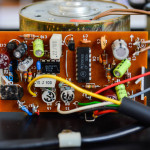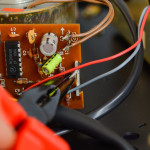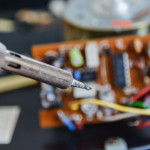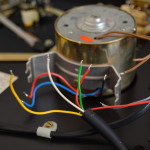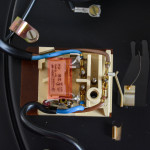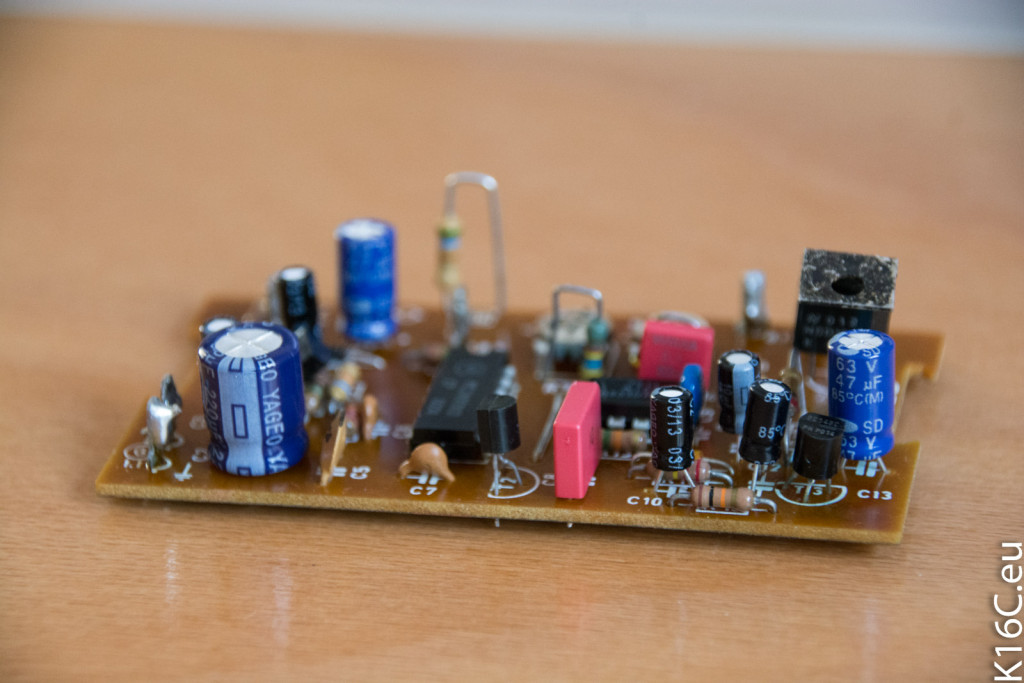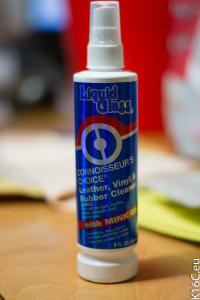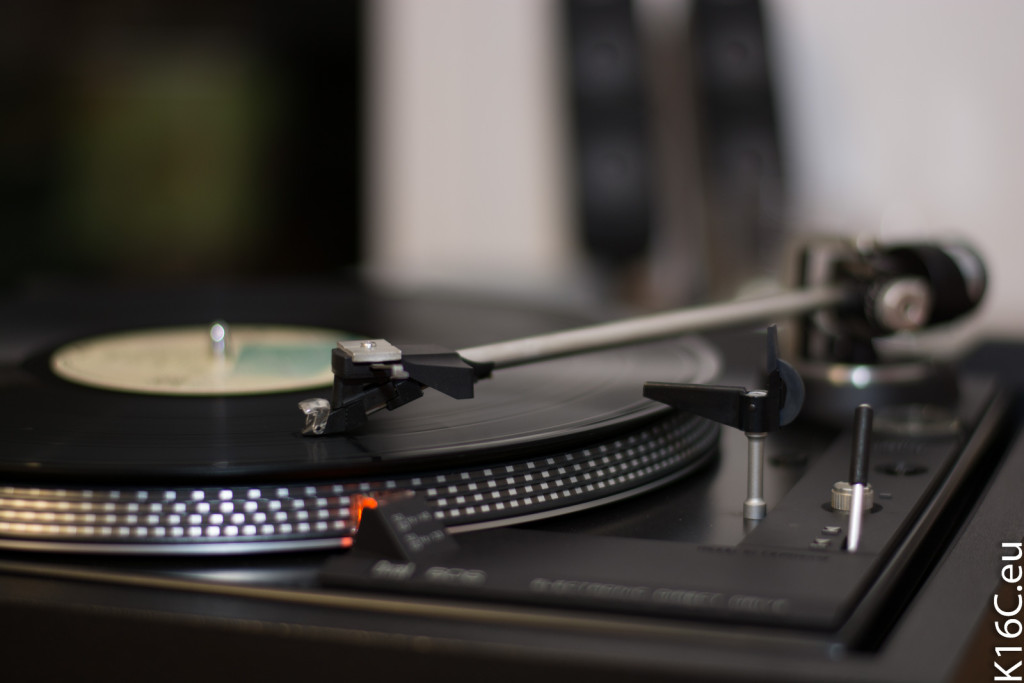Hello again! Christmas’ approaching with giant steps and I finally have some free time to write again. After sitting on my desk for a short while, here are the remaining steps for the restoration of the Dual CS 606 record player. For those of you who haven’t read the first part: Dual 606 record player – Restoration (part 1).
In this second part we will focus on getting the electronics up and running again. This involves replacing all the capacitors and checking/cleaning the pots, switches and finally checking solder joins.
Bill of material
Capacitors:
C55: 1000µF / 40V axial-lead
C1, C13: 47µF / 25V radial (bought 47µF / 63V)
C2: 220µF / 6V radial (bought 22µF / 35V)
C3, C4, C10: 0,47µF / 35V radial (bought 0,47µF / 63)
C8: 0,22µF / 100V PP film cap
C11: 10µF / 16V
C12: 0,68µF / 35V (bought 0,68µF / 63V)
C14: 0,1µF / 100V
EMI/RFI suppression cap: 10nF / 250V (bought 10nF / 275V X2)
Pots:
R8: 10kΩ linear trim PCB mount
R9: 22kΩ linear trim PCB mount
R19: 5kΩ linear shafted
Other material:
- a good soldering iron, ideally an adjustable one to not fry the PCB (I own a not-that-bad Atten AT80D).
- a desoldering gun
- some chemical contact cleaner spray (preferable a mild one)
- a set of pliers
- a multimeter
Notes
I didn’t replace any potentiometer in the end as all of them were OK-ish. The pitch adjustment pot (R19) was in perfect shape. The two PCB mounted ones (R8 and R9) just showed slight traces of corrosion that were gone after cleaning the PBC. In any case I’ll recommend you to clean of the PCB to get rid of that nasty rosin they used in the factory thirty years ago!
If you need some additional information about the Dual CS 606 you can find them here:
- Service manual
- Owner manual
- Spec sheets: Dual CS 606 at Dual-Reference and in Vinylengine library
Rebuilding the electronics of the Dual CS 606
For steps 1 to 6 have a look at the previous article: Dual 606 record player – Restoration (part 1).
Step 7: dismount the motor driver PBC
- The driver board
- Bend the clips open
- Unsolder all cables
- …and remember where the wires were attached to!
I found it a lot easier to free the board (bend the holding clips on both sides) first and to unsolder the cables then. Note: I’ll recommend you to take a few pictures of the wiring before unsoldering it!
Step 8: Open the power supply casing
- Dual 606 PSU Casing
There are just two screws to remove.
Step 9: Start replacing the caps
I replaced all of the electrolytic and film caps I could find in the record player:
- Capacitor C55
- Supressor cap
- Most caps on the driver PCB
Note: to replace the capacitor C55 the “quick and dirty” way is to cut its legs and to solder the new one on the old ends. I went that route because removing the PCB from its enclosure seemed way too much work.
Step 10: Contemplate and… take a cup of coffee!
Well most of the work is done! All that’s left is to put everything back together!
Cleaning tips
When cleaning an old player I usually rely widely on household-grade “chemicals”. A mix of 95% water, 5% isopropyl alcohol and a few drops of dishwashing liquid is perfect for every piece of plastic and the chassis (which is just a painted steel plate).
Speaking of pieces of plastic; you must know that most panels on the top of chassis can be removed quite easily. They’re just hold in place by half a zillion of small metal clips. It’s a bit of a chore to get those off (and take it gently, those clips are likely to break), but with a small slot screwdriver it’s just a matter of minutes. And with those parts off it’s far easier to get the dust and dirt out of every corner!
Otherwise I definitely can recommend giving the rubber “slipmat” a refresh using some (good) rubber cleaner. Here’s my favorite one:
The Dual CS 606 impressions
To be honest I am rather impressed! In spite of not yet having replaced the old needle (DN 155 E in a ULM 55 E cartridge, both built by Ortofon) is really a nice combo. I mean it’s by no way high-end but it is really pleasant to listen to. And everything else just fits in the image. This is a rock solid record player that will run for another thirty years or so now!
Pros:
- Beautiful
- Easy handling manual operation (there’s something Dual named “groove finder” that makes the tonearm “hang” a little bit at the record’s beginning)
- OK-ish cartridge
- Great tonearm (the only adjustment missing is VTA)
- Great direct drive
Cons:
- The headshell has no 1/2 inch mount (solely ULM)
Well dear readers this is it! The Dual CS 606 is ready to be sold again. If you ask yourself why? Well I’m in love with some older MM cartridges (Elac ESG 796 and ESG 896) and those are 1/2″ mount only. Additionally I need some space on my desk for the next record player to restore!
I hope you enjoyed the reading, if you have any question please leave a comment!

